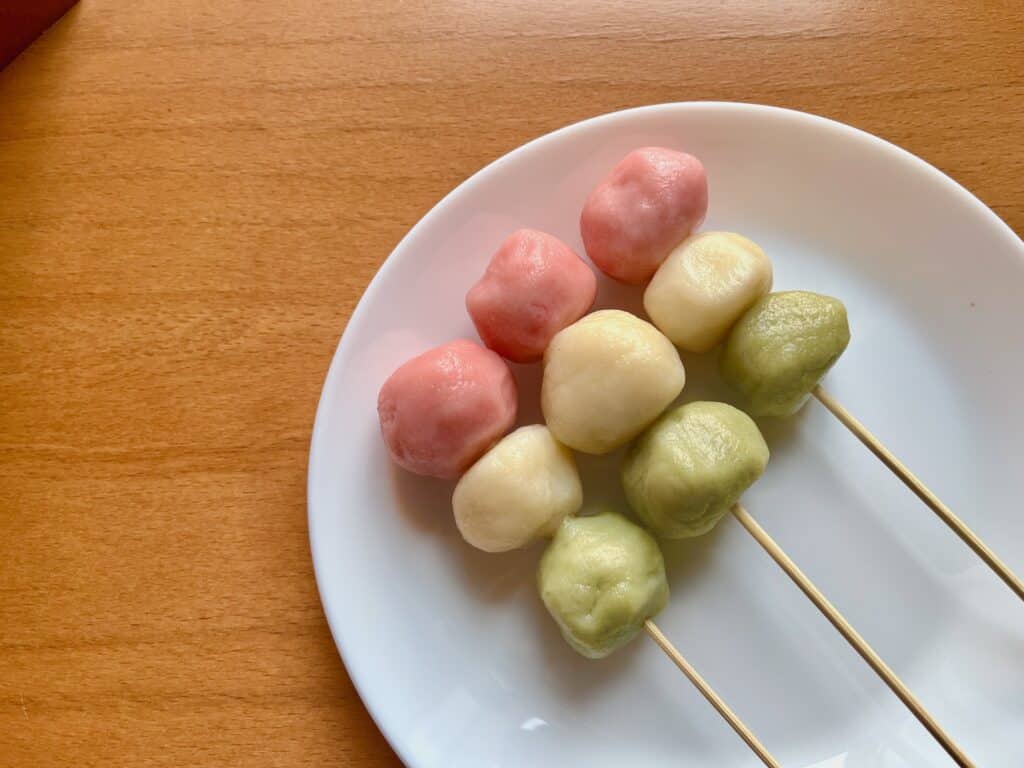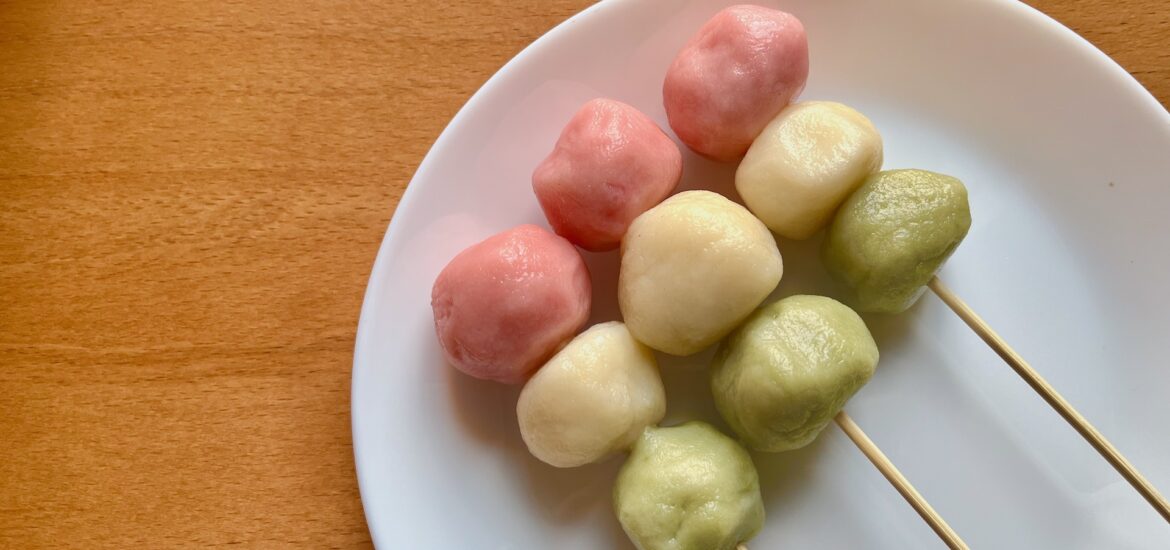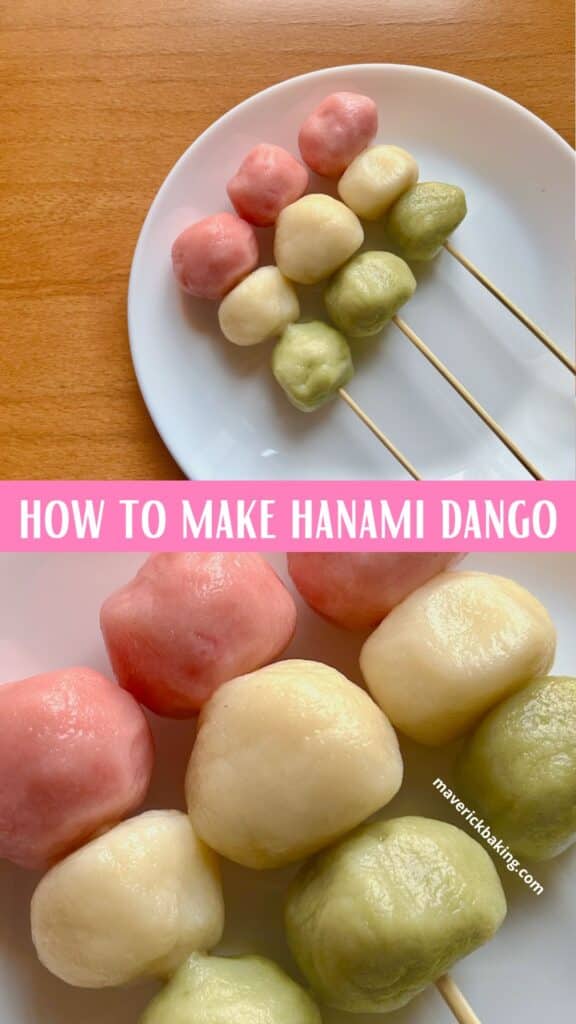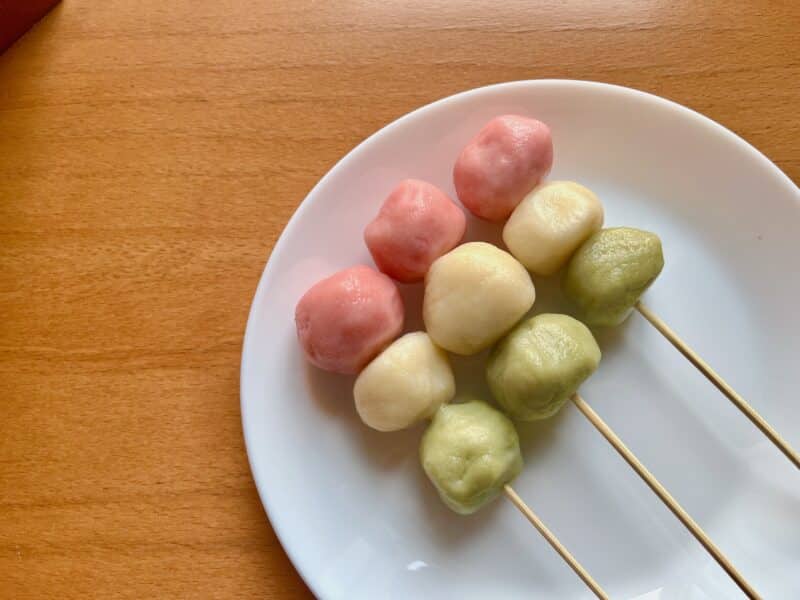Hanami dango; sweetened chewy dumplings made with rice flour and silken tofu, skewered for seasonal snacking.
Japan. A tiny island with a culture that’s just about as famous and far-reaching as it could possibly be. Its stories, its landscape, its industry, and its food touch every part of our world.
Being born and raised in Scotland, I wasn’t introduced to Japanese food until my late teens, never having previously ventured into a sushi restaurant or noodle bar. However, as I believe it does to most people upon first taste, it grabbed me immediately.
Few places master potency and delicacy in single plates the way that Japan does. Flavours from its dishes can either be the most bold and umami, or the most gentle and subtle. This is all before we mention the famous lightness and elegance that accompanies even the simplest of plates in Japanese cuisine.

Tempura, ramen, sushi, tofu, sashimi, wagyu, donburi, miso. Words and flavours that we in the west are now well-acquainted with, but they all have something in common. They’re all centred on the savoury. Something the rest of the world has yet to explore when it comes to Japanese food is dessert. The more adventurous among us will have sampled a few kinds of frozen mochi or some matcha-spiked treats, but how much do we actually know about the sweet side of this cuisine?
Personally speaking, almost zero. I’m on first-name-terms with many kinds of western European desserts and pastries, being deeply in love with what France, Italy, England, and Austria have created in the past few centuries. Similarly, through plenty of media exposure, I’m fairly familiar with North American sweet treats and their origins. However, I must admit that I am almost completely in the dark when it comes to east Asian desserts.
Previously in the Desserts of the World series, we tackled a Thai favourite, coconut sticky rice. Aside from this, I have never prepared an east Asian sweet before. Silken tofu and glutinous rice flour are not everyday ingredients in my Italian kitchen, but I was very excited to get stuck into a completely new way of making a dessert.
Behold, the result, hanami dango!
Sweet, chewy, colourful little dumplings, skewered and snacked upon (traditionally) in the springtime when the blossoms begin to bloom. These pretty little things are one of many kinds of wagashi, small and delicate sweet treats that are typically enjoyed with tea.
While there is a wide variety of Japanese desserts I could have made for the Desserts of the World series, I couldn’t get past the simplicity and attractiveness of hanami dango. The shape, the colours, the minimal ingredients. I’ve never seen, made, or tasted anything like it before.
I (crudely) described these to some locals here in Veneto in Italy as almost a kind of sweet, chewy gnocchi. The concept of a sweet dumpling doesn’t really exist here, let alone in my home turf of north east Scotland. As odd as my uncultured description is, I mean it in a complimentary way. These hanami dango are definitely unlike anything I ate growing up, but I certainly don’t dislike them.
They are somewhat pleasantly bouncy in texture, meaning you can tear off big bites from the dumplings on their sticks. The flavour is delicate, providing a gentle sweetness and subtle taste of rice. The green and pink dumplings are either coloured or flavoured and coloured to add variety. I used matcha to create the green colour, which also added that nice subtle green tea flavour to the green dango. The pink colour was achieved by just a drop of red food colouring that I had in my kitchen already, but can apparently also be achieved with freeze-dried strawberry powder for extra flavour!
These hanami dango are every bit as fun to make as they are to eat. Kneading, colouring, rolling, cooking, skewering, scoffing. They are quick, visually appealing, and definitely different.
The Desserts of the World series continues, and I can’t wait to discover new treats!
Want to save these hanami dango for later? You can pin the image below!
To make these hanami dango, simply follow the recipe below:
Ingredients
- 180g glutinous rice flour, plus extra for dusting
- 170g silken tofu, or water
- 70g caster sugar
- Pinch of matcha powder
- A drop of pink colouring, or pinch of freeze-dried strawberry powder
Instructions
- In a large bowl, mix and knead together the flour, water, and sugar to form a smooth dough.
- Separate the dough into 3 equal parts.
- Set aside one to create the white dango. Add the matcha powder to one remaining dough lump, and the pink colouring to the other.
- Separately knead the dough lumps until the colour is evenly distributed, creating pastel pink and pastel green. If the dough feels sticky, dust your hands and work surface with extra rice flour.
- Evenly divide each of your 3 dough lumps into 8-12 pieces, and gently roll them into little round balls (using an extra dusting of flour if needed).
- Set a large pan of water on the stove and bring it to a rolling boil.
- In 3 batches, carefully drop your dough balls into the water and allow to boil until they bob and float at the top. This should take 3-5 minutes.
- Use a sieve or strainer to remove the cooked dough balls and dunk them into cold water to stop the cooking process.
- Set the cooked dango on a plate while you continue cooking the rest.
- Once all cooked, skewer the dango onto bamboo sticks, and serve.
- Enjoy!
BE A MAVERICK: why not whip up a tasty sweet dip to dunk the dango into?
These hanami dango will keep well in an airtight container for up to 2 days, but are best enjoyed fresh (warm or cold!)
You may also like:





